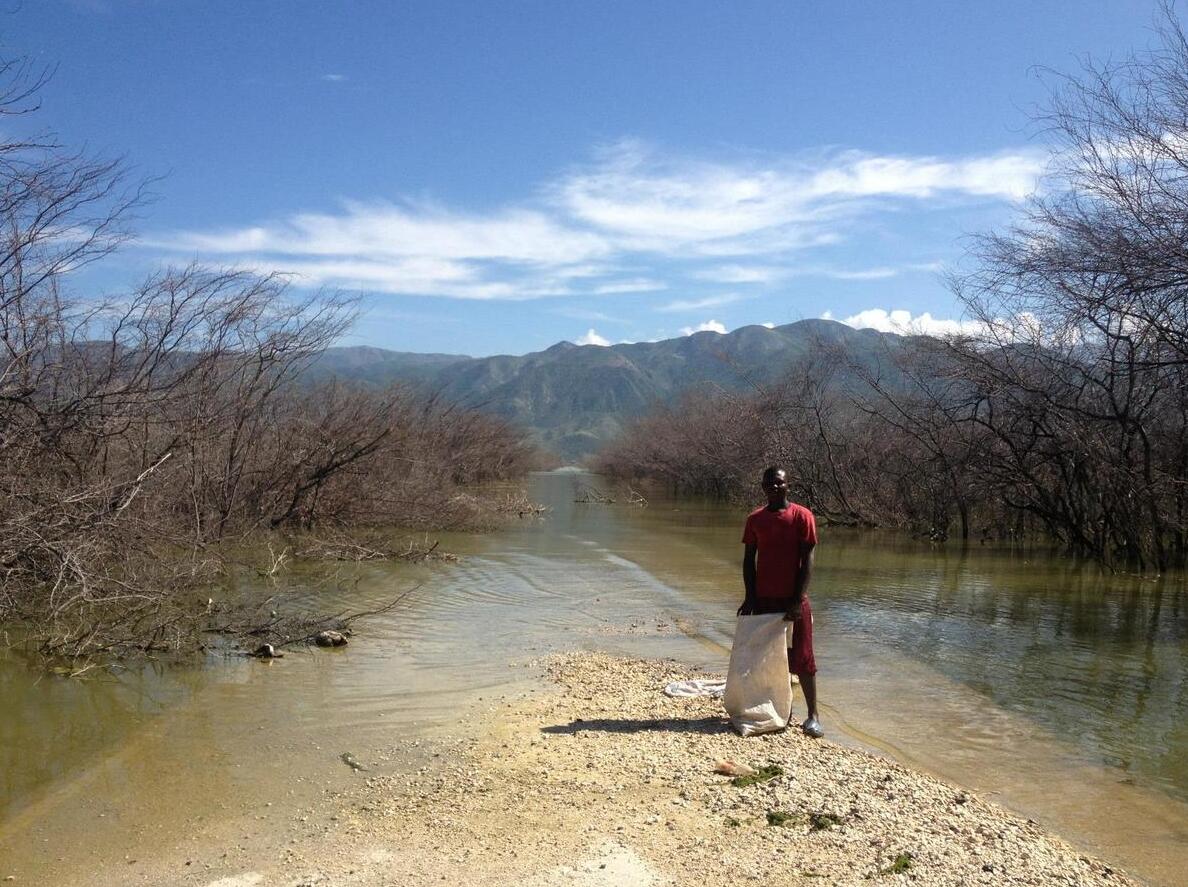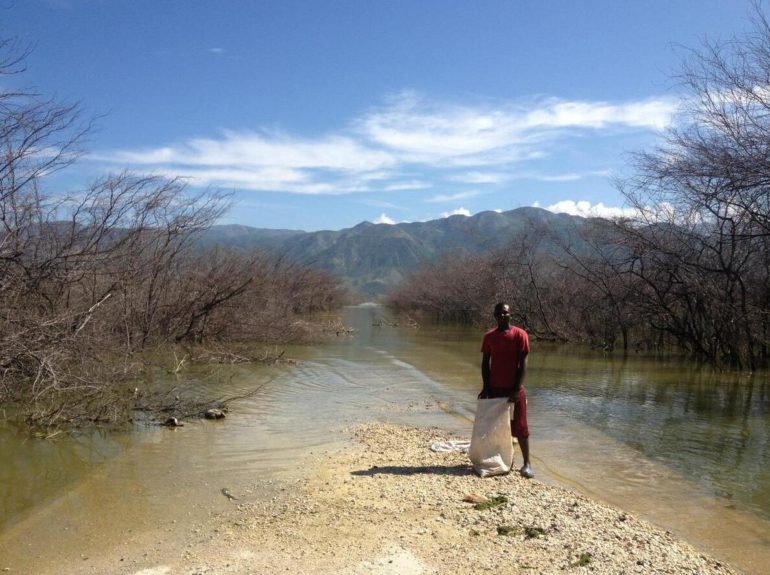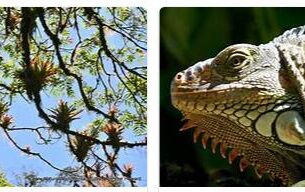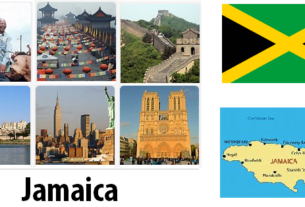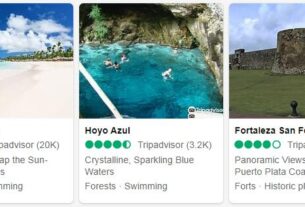Haiti is mountainous; about. 2/5 of the land is greater than 500 m. Four limestone mountain ranges extend through the country in an east-west direction. The highest parts of the mountains usually consist of magmatic rocks, crystalline shales or older sediments. The landscape is subject to frequent earthquakes.
At the far north is the Massif du Nord, which extends east into the Dominican Republic where it is called Cordillera Central. To the south of this are the smaller chains Montagnes Noires and Chaînes des Matheaux. At the far south is the Massif du Sud, with the country’s highest mountain, Pic la Selle (2674 meters), in the southeast.
Between the mountain ranges are small lowland areas and recesses. Largest are the coastal plains along the north coast, the Plaine du Nord, the Artibonite Valley around Artibonite, the country’s largest river, and the Cul-de-Sac descent south of Chaînes de Matheaux, which opens onto the wide Gulf of Gulf of la Gonâve. Parts of this recess lie beneath the sea surface and are filled with salt lakes, the largest of which is Étang Saumâtre.
The lakes rising
Étang Saumâtre, also known as Lake Azue, is Haiti’s largest lake and reaches all the way to the Dominican-Haitian border, at Jimaní – Malpasse. There is also the busiest border road, namely the one that connects the island’s two capitals. On the Dominican side, a few kilometers away, lies the Dominican Republic’s largest lake, Lake Enriquillo. From around 2004, both lakes have grown over their respective shores, with the result that several villages, large agricultural areas and a number of public and private buildings have been submerged.
On the Dominican side, the authorities have moved the small village of Boca de Cachón a few kilometers further away, while on Haiti there have been few measures.
As of 2016, no one has been able to explain this continuous rise in the water level.
Climate in Haiti
Haiti is located in the tropical climate zone and is under the influence of the Northeast Pass all year round. Terrain conditions and location relative to prevailing wind directions condition significant differences in annual rainfall. In general, there is less rainfall in the lowlands than in the mountains, and the precipitation is usually greatest on north- and northeast-facing slopes. Thus, Cap Haiti on the north coast receives 3250 mm a year, with precipitation in all months, but with a maximum in winter when the pass is strongest. Port-au-Prince, the capital, on the other hand, lies in the mud of the northern mountain ranges, and has 1340 mm of precipitation, which falls mainly during the summer months. Temperatures vary according to elevation, but are around 26 °C in annual lowlands.
Detailed climate information about Haiti on the website of the World Meteorological Organization.
Plant life in Haiti
Mangrove forest grows along the coast where landforms allow. Haiti had rainforests in the north, it is mostly cut down. To the south and in the inland valleys there is savanna. Tropical and subtropical benefits such as avocado, mango, lime and orange are lost. In the driest regions there is steppe vegetation with cactus and alpha grass, among others. In higher-lying areas, scattered populations of coniferous forests are still growing. Over approx. 1500 masl the vegetation becomes alpine. The flora is relatively species rich, over 5000 species of vascular plants have been registered.
Wildlife in Haiti
The mammal fauna in Haiti is poor and consists essentially of bats, rodents and introduced species such as cats, dogs and mangoes. The rare Haiti alminquien belongs to the primitive insekteter family SOLENODON. Together with a closely related species in Cuba, they are the only surviving representatives of the family. Fossils of large, terrestrial sloths have been found in Haiti. American manatee or lamantine (a sea cow) is found in coastal waters. Many birds associated with the wetlands and the coast: brown pelicans, soles, herons,realms, waders, laughter and terns. Otherwise there are parrots, cuckoos, hummingbirds, trogons, toads and woodpeckers. Several of the nearly 250 species observed in Haiti are native to Hispaniola (Haiti and the Dominican Republic).
